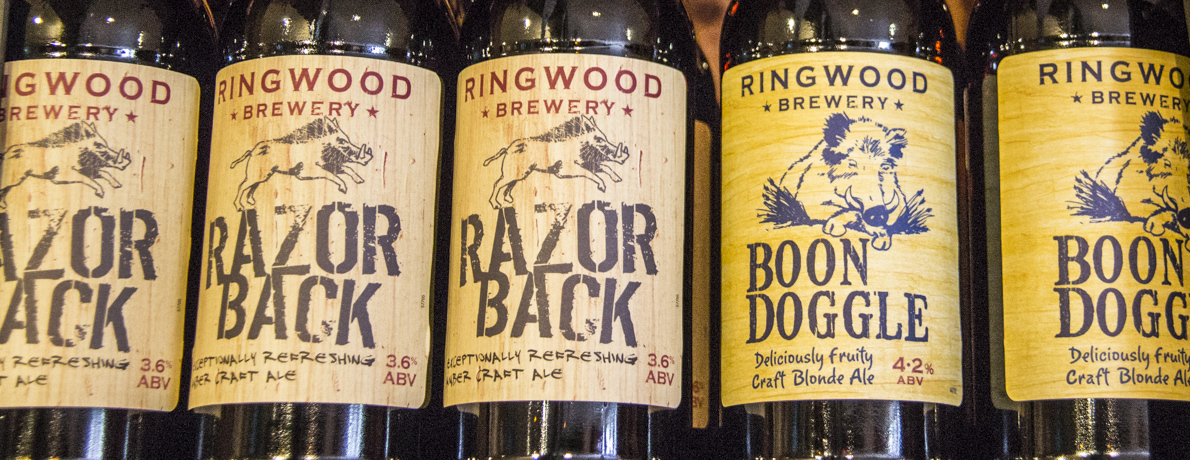
Galloping through the Furlong Shopping Centre in Ringwood, Hampshire are bronze statues of a mare and foal created by Priscilla Hann. They are a beautiful reminder that Ringwood is in the New Forest and an ideal base for exploring the forest on foot, horseback, bus or bicycle.
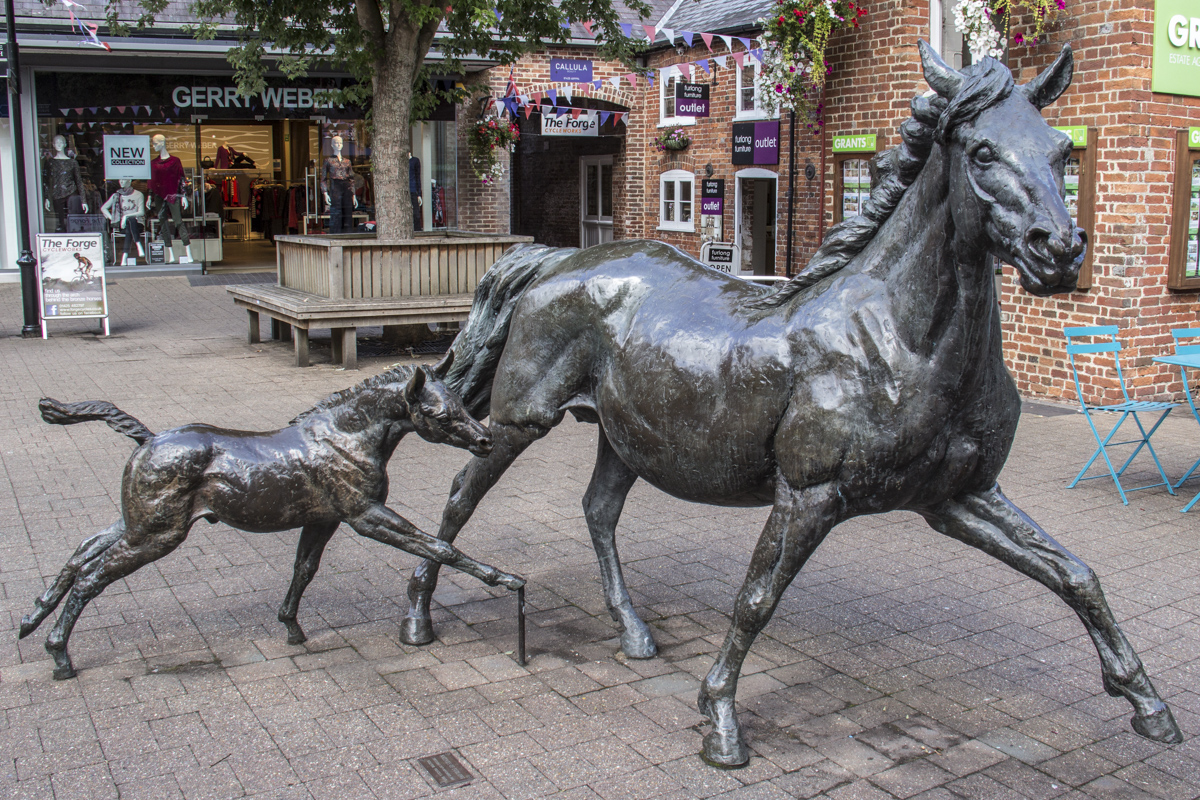
The Market Place
In 1226 Ringwood was granted a charter to hold a weekly market in its Market Place. For centuries this market was the main centre for the sale of produce from the Avon and Stour areas as well as cattle and New Forest ponies. The sale of animals ended here when the cattle market closed in 1989 but the street market still takes place every Wednesday. Today it sells a wide variety of products and is supplemented by a Farmers’ Market held at the weekends and speciality markets also take place in The Furlong and Gateway Square. The Ringwood Gateway public services building, opened in 2012 occupies one side of the Gateway Square which features an unusual centrepiece – some unusual, quaint wooden sculptured seating decorated with carvings designed by local inhabitants.
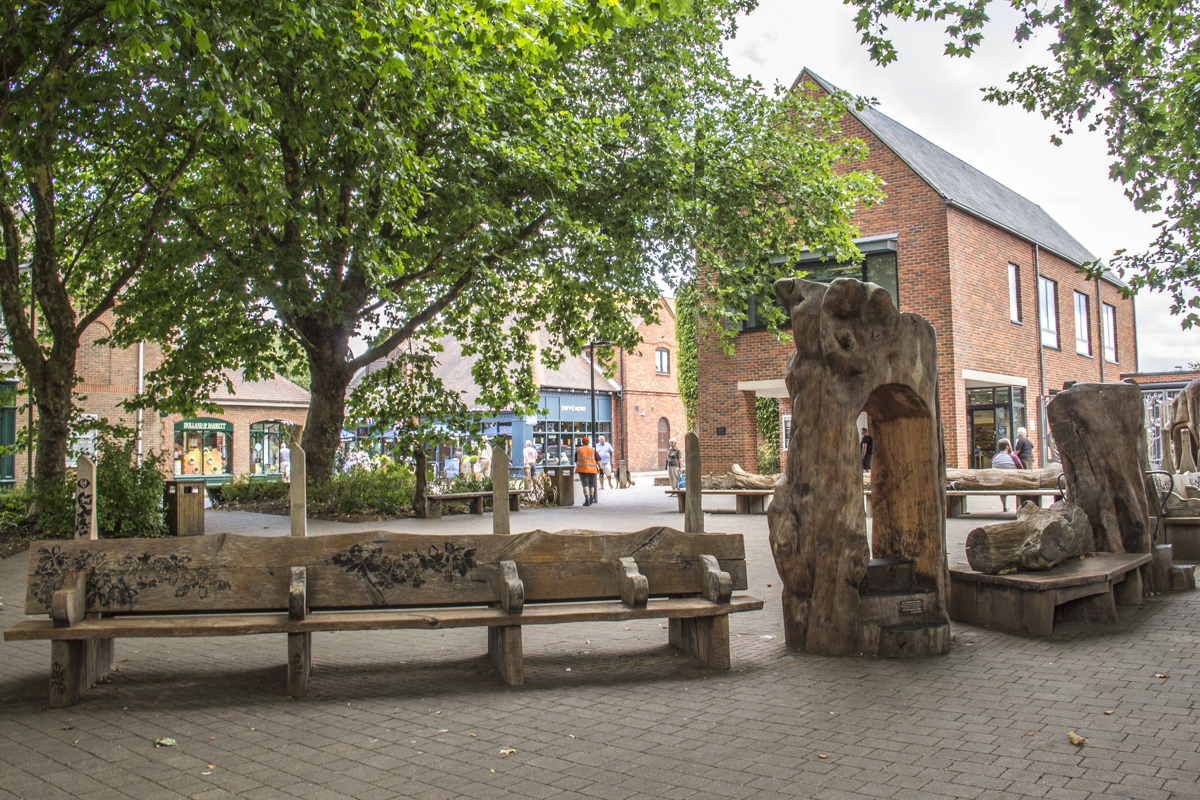
In the centre of the Market Place is the Jubilee Lamp which was built in 1887 to celebrate Queen Victoria’s Golden Jubilee. This Grade 11 listed monument made from cast iron and topped with copper lanterns stands on a stone plinth. A striking addition to the spacious Market Place.
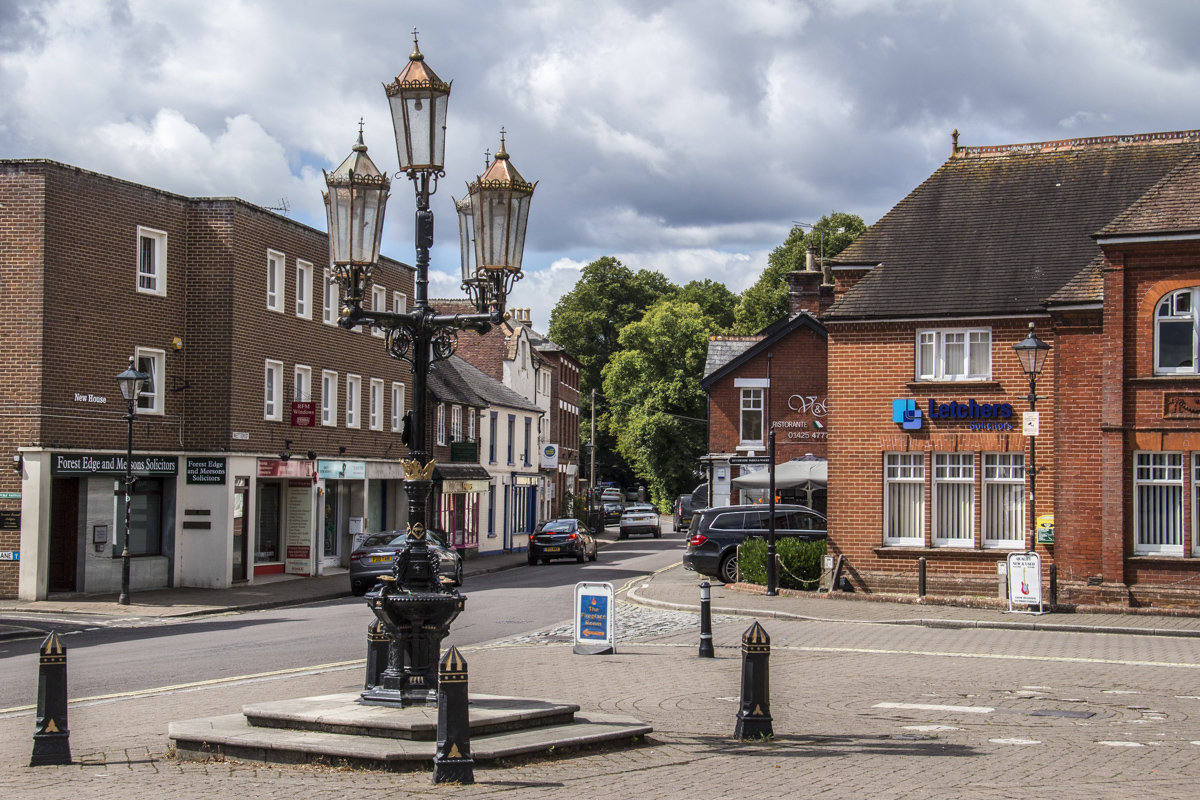
Overlooking the Market Place is the parish church of Saint Peter and Saint Paul. There has been a church on this site since the eleventh century. The original church was re-built during the thirteenth century and survived until 1853 when it was demolished to make way for the church that stands there now. Inside there is a fifteenth century brass of John Prophet, Dean of Hereford and York. Its bell tower is occasionally open to the public. This church is the largest public space in Ringwood and there are plans to renovate the building in a way that will make it a flexible space for community use.
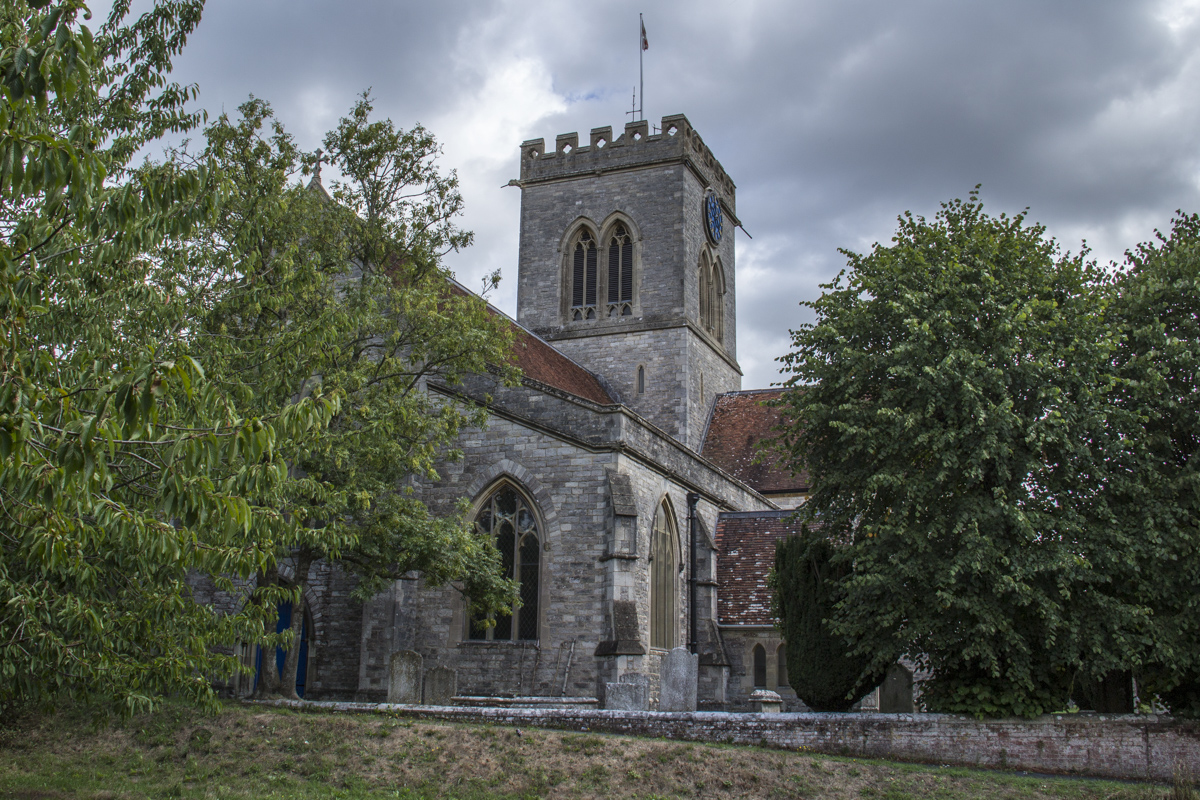
Close to the church is the Old Bank House thought to have been built around 1720 it was originally known as the Crown Inn and was Ringwood’s most popular coaching inn with stabling for twenty horses. When the landlord was declared bankrupt at the beginning of the nineteenth century the building was sold and the new owner transferred the licence to an inn at Friday’s Cross (at the top of the High Street). The new owner, Stephen Tunks turned the building into a house for himself. It is thought he was the owner who faced the building with the unusual yellow tiles that have been arranged to look like bricks. Tunks was a banker and a brewer (Tunks Brewery), Part of his house was used as the Ringwood & Hampshire Bank. He issued his own bank notes. The bank failed following the death of Tunks causing a lot of hardship to the townsfolk. The house was auctioned and after a succession of private owners and a variety of uses the house was threatened with demolition to make way for a new road in the early 1970s.. This plan was never implemented but the building fell into disrepair until it was bought by a developer at the beginning of the twenty-first century. It was restored, divided into four private apartments and re-named The Old Bank House reflecting its earlier history.
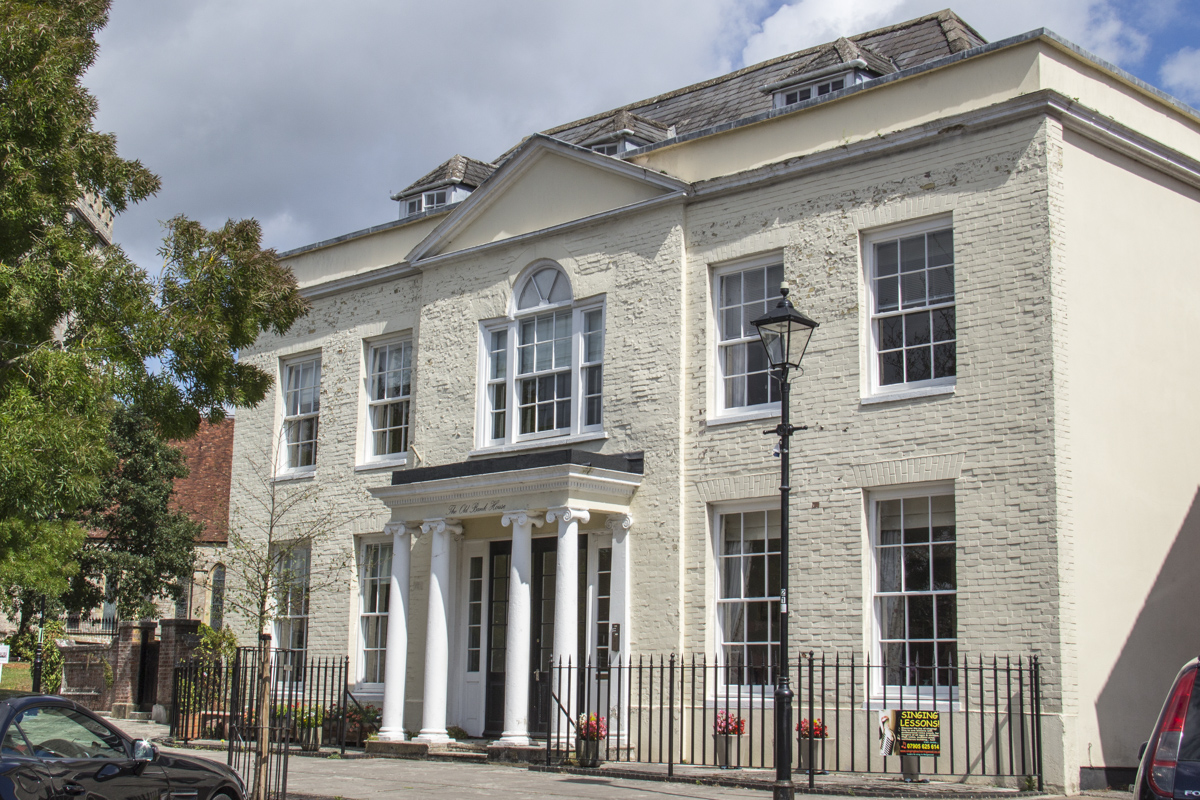
West Street
Monmouth House, on West Street, is deemed to be the place the Duke of Monmouth, the illegitimate son of Charles II, was taken after being captured following the Battle of Sedgemoor during the unsuccessful Monmouth Rebellion in 1685. He was discovered hiding under an ash tree in a ditch and taken to Ringwood vicarage to be questioned. At that time the vicarage was close to the church so it would have made sense to house him in a church property while it was decided what should be done with him. While he was there the Duke wrote a letter to his uncle, King James II, begging for mercy but his pleas were ignored. He was taken to London and executed on Tower Hill outside the Tower of London. An interesting note regarding his sojourn in Ringwood records that when he went out riding he refused assistance to mount his horse (his hands being tied behind his back) but would put his foot in the stirrup and spring into the saddle. At the same time an elderly local resident, Alice Lisle, gave refuge in her home, Moyles Court, to two men fleeing the battle field. She was arrested and sentenced by Judge Jeffries to be burned at the stake. Following a reprieve her sentence was reduced to beheading. Today Moyles Court is occupied by a private school, Moyles Court School
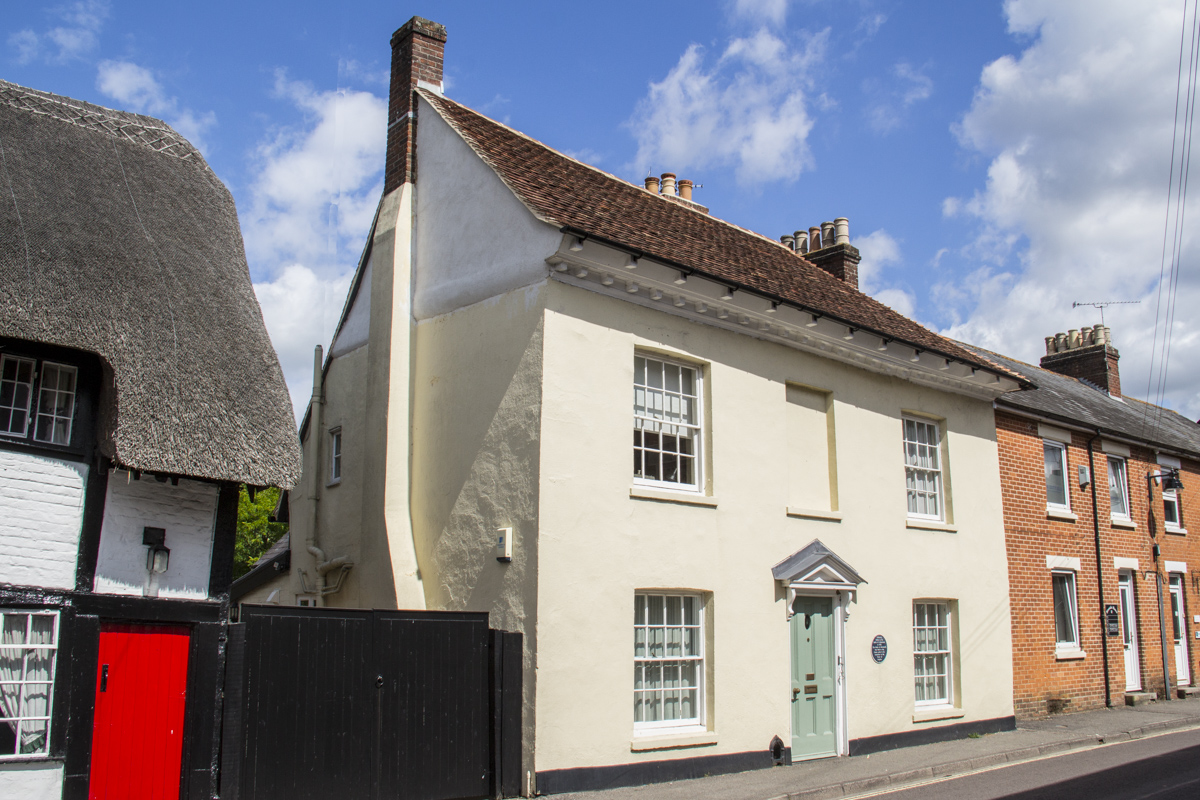
The vicarage where the Duke of Monmouth was questioned was demolished in the 1930s to make way for a road to accommodate the increasingly popular motor car. However, part of the vicarage gardens that once stretched along both sides of the Millstream were converted into the Jubilee Gardens situated on one side of the Millstream further along West Street. The Millstream itself became redundant when the corn mill, beside the parish church, was demolished to make way for the dual carriageway. These gardens were laid out to commemorate the Silver Jubilee of Queen Elizabeth II in 1977.
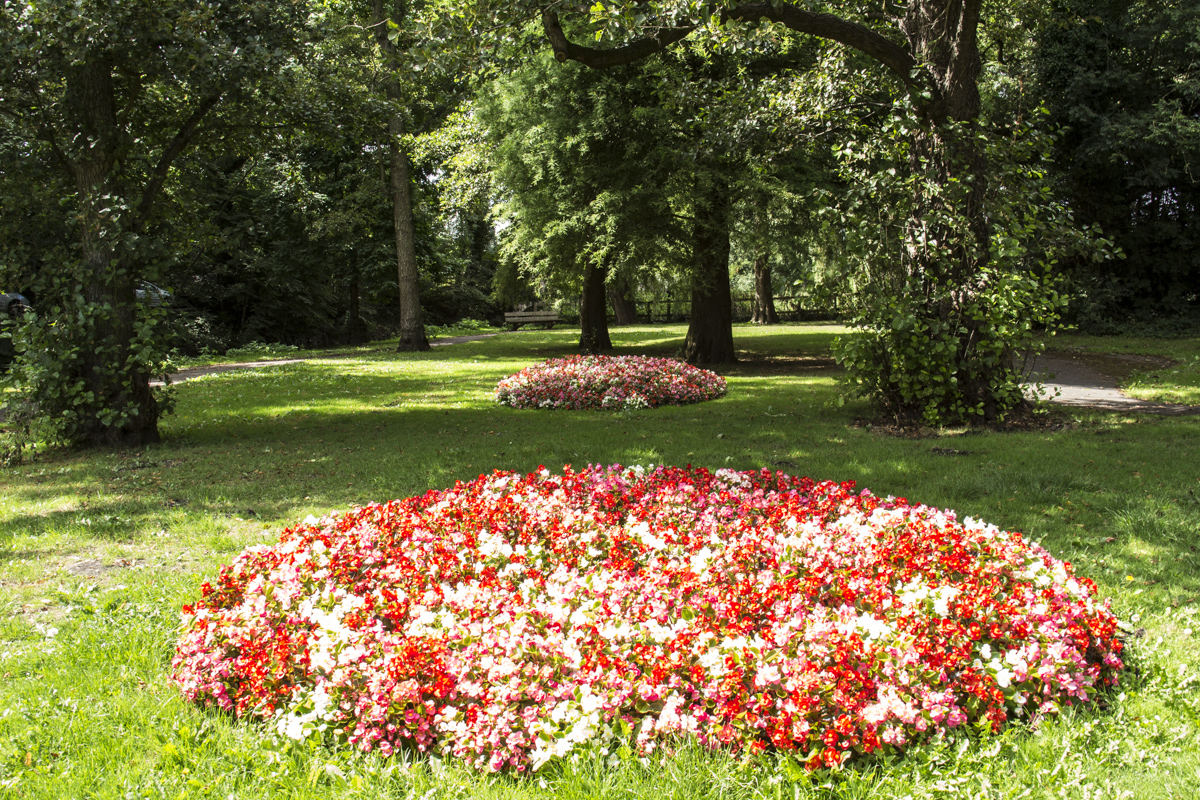
The Fish Inn, is the oldest pub in Ringwood. At the end of West Street, it is the only pub in Ringwood that overlooks the River Avon. Unfortunately, it also beside the dual carriageway that by-passes the town but it does have a lovely riverside garden. The gardens offer a good view of the three-arched listed bridge that was built at the beginning of the nineteenth century. The Fish Inn has occupied this position for at least two centuries and in the early nineteenth century it belonged to Stephen Tunks, the local brewer and banker, whose businesses collapsed after his death in 1821. In 1827 the Fish Inn was bought by another Ringwood brewery, Carter & Co whose brewery, further along West Street, was on the site of the bus depot. Since 1991 the Fish Inn has been privately owned. Over the years the inn has been extended and its interior has been changed but this thatched double-fronted building looks much the same as the original building.
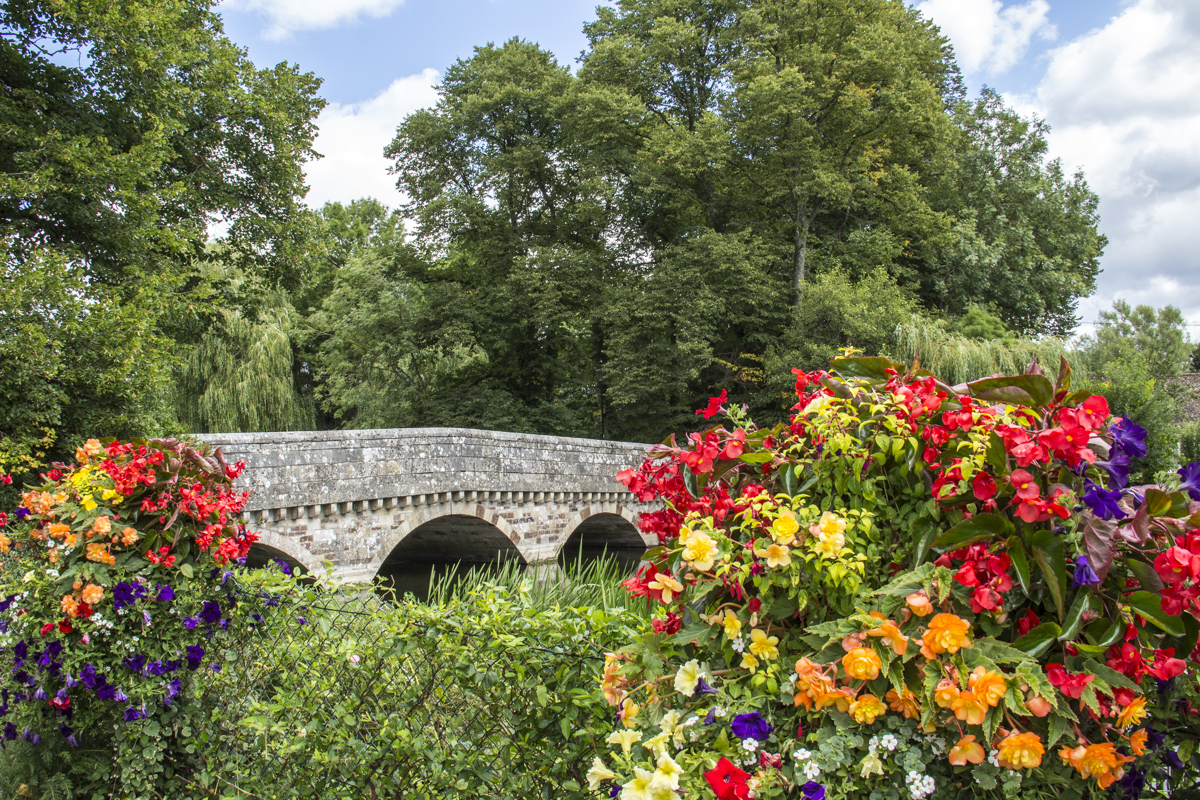
The High Street
Crossing the Market Place to explore the High Street on the other side it was sad to see the old Town Hall, once one of Ringwood’s most prestigious buildings, boarded up awaiting its fate. The Town Hall was built by John Morant, then Lord of the Manor of Ringwood in 1868. It included a large corn exchange, a magistrates’ court and a library. At the time Ringwood was prospering but soon after it opened a slump in the arable market due to imported corn from North America meant the corn exchange was not a great success although it was used for concerts and other events until 1916 when the Morant family were forced to sell most of their estate in Ringwood including the Town Hall. Since then the building has functioned as a cinema, a shopping arcade and night club. It has undergone both internal and external modernisation. Although the entire premises were bought by the owners of the Furlong Centre plans to restore the building incorporating retail space and residential accommodation came to nothing and its future is still under discussion.
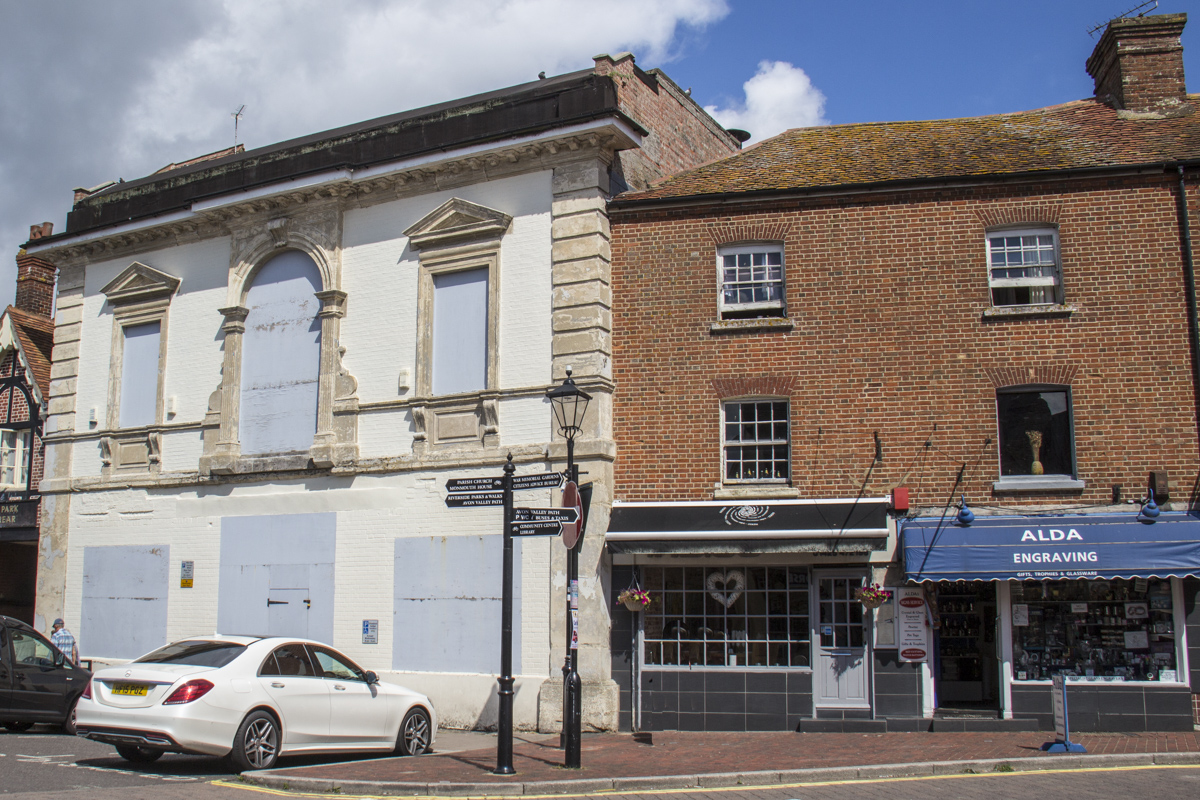
Thanks to the perseverance of local resident Chris Wood, another famous monument of Ringwood, the Friday’s Cross clock, has been restored and put back in its original position on the front of number 2 the High Street currently occupied by the restaurant Friday’s. This building is just below the junction of the High Street with the Southampton Road – the area known as the Friday’s Cross. In the past flocks of sheep and herds of cattle and ponies would have passed through this junction on their way to the Market Place. Today Friday’s Cross is market by a circular metal seat topped with an acorn. The High Street is an attractive mixture of different architectural styles housing independent businesses.
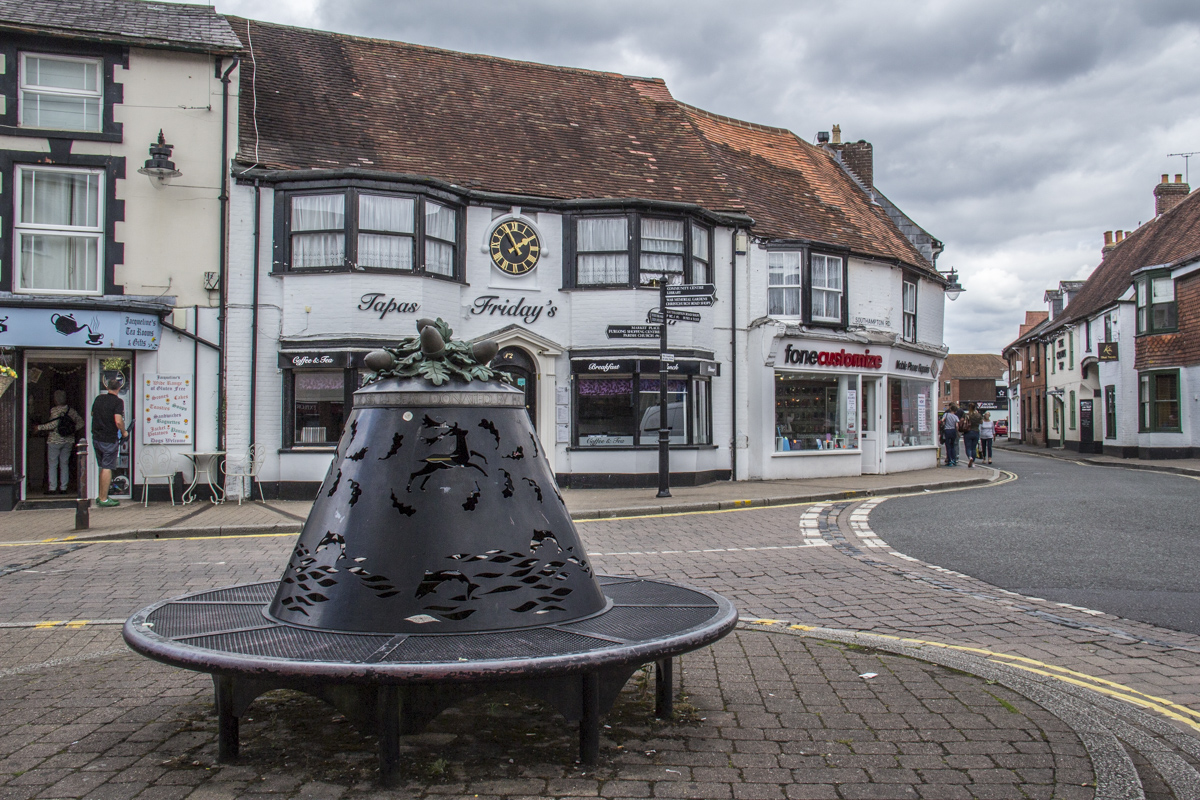
Parks and Pathways
I followed a signpost directing me to the Avon Valley Path even though I knew I would not have time to follow more than a short stretch of this thirty-four-mile long-distance walking route. It goes all the way from the Cathedral city of Salisbury to Christchurch Priory on the South Coast. It crosses the meadow between the Bickerley Millstream and the River Avon on the outskirts of Ringwood. I was distracted by the sight of Tansy’s Continental Café in the White Lion courtyard. Enticed inside by a menu of delicious savoury dishes I got no further than the display of scrumptious cakes just inside the door and lunched on a coffee and a slice of coffee cake before continuing to the area known as Bickerley. Just beyond Bickerley Common (now a Village Green) I found the Danny Cracknell Pocket Park. This small natural park beside the Bickerley Millstream was originally named the Pocket Park but the name was changed to honour a much-loved resident and past mayor of Ringwood, Danny Cracknell. After walking through this little park I crossed the Millstream and joined the Avon Valley Path for a little way.
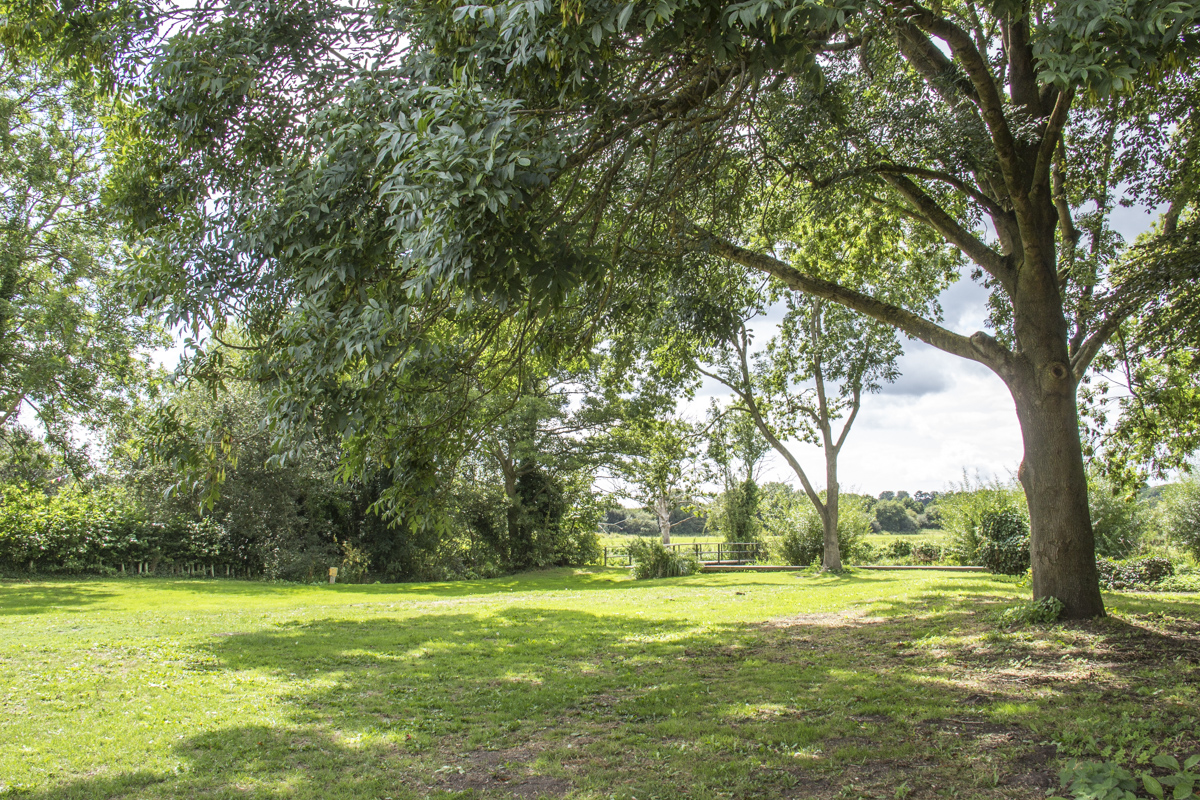
After re-tracing my steps, I joined another long-distance path, the Castleman Trailway which follows the old route of the Southampton to Dorchester railway line. It is named after Charles Castleman who was instrumental in bringing the railway line to Ringwood in 1847. This line was known as Castleman’s Corkscrew due it’s meandering nature. This was one of the main reasons for its eventual closure. The Trailway, managed in partnership by Dorset County Council, the Borough of Poole and Hampshire County Council, is a wide easy path suitable for walkers, cyclists and riders stretches for more than sixteen miles. A short distance along this trail I came across the Raymond Brown Nature Reserve. During his lifetime Raymond Brown had taken a great interest in the wildlife and had supported many voluntary projects in Ringwood. After his death his family funded the creation of this nature reserve. It is only open during the summer months to protect the birds in the reserve.
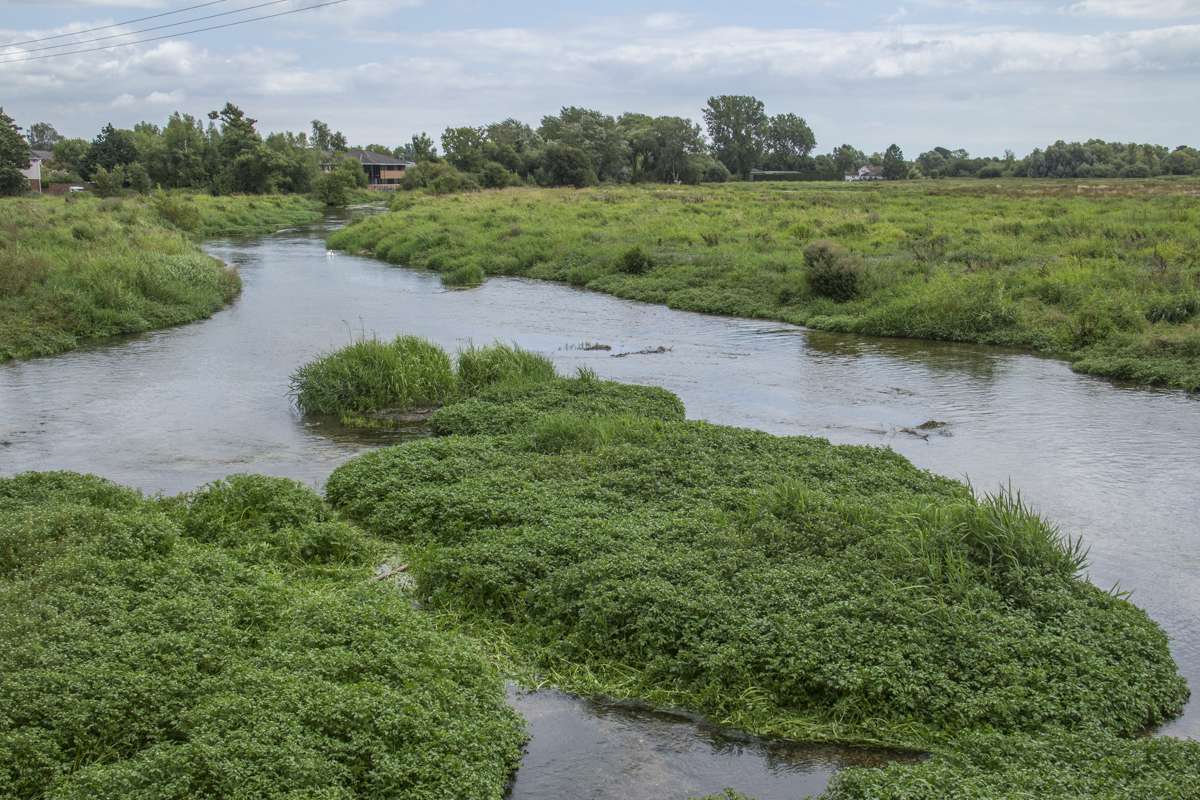
The Ringwood Brewery
Ringwood Brewery offers afternoon tours every day and it proved to be a very enjoyable experience. I arrived in good time and had a look around the brewery’s yard. Empty casks were stacked high ready to be filled with the next brew. I could tell the difference between a barrel and a cask just by the shape, the latter being cylindrical but I had no idea that they served different purposes. The beer in a barrel has had the yeast removed and gas has to be introduced into the barrel to get the beer flowing. Ale is a cask is a living product as it still contains yeast. Once air has been introduced at the top of the cask so the ale flows out of the tap at the bottom it only retains its quality for five days. I wished I had been able to tell the difference between a wart hog and a Hampshire Hog. When I asked why they had a bronze wart hog in the yard I was informed it was a Hampshire wild boar. Wild boar used to roam the New Forest and Ringwood Brewery have adopted it as their emblem.
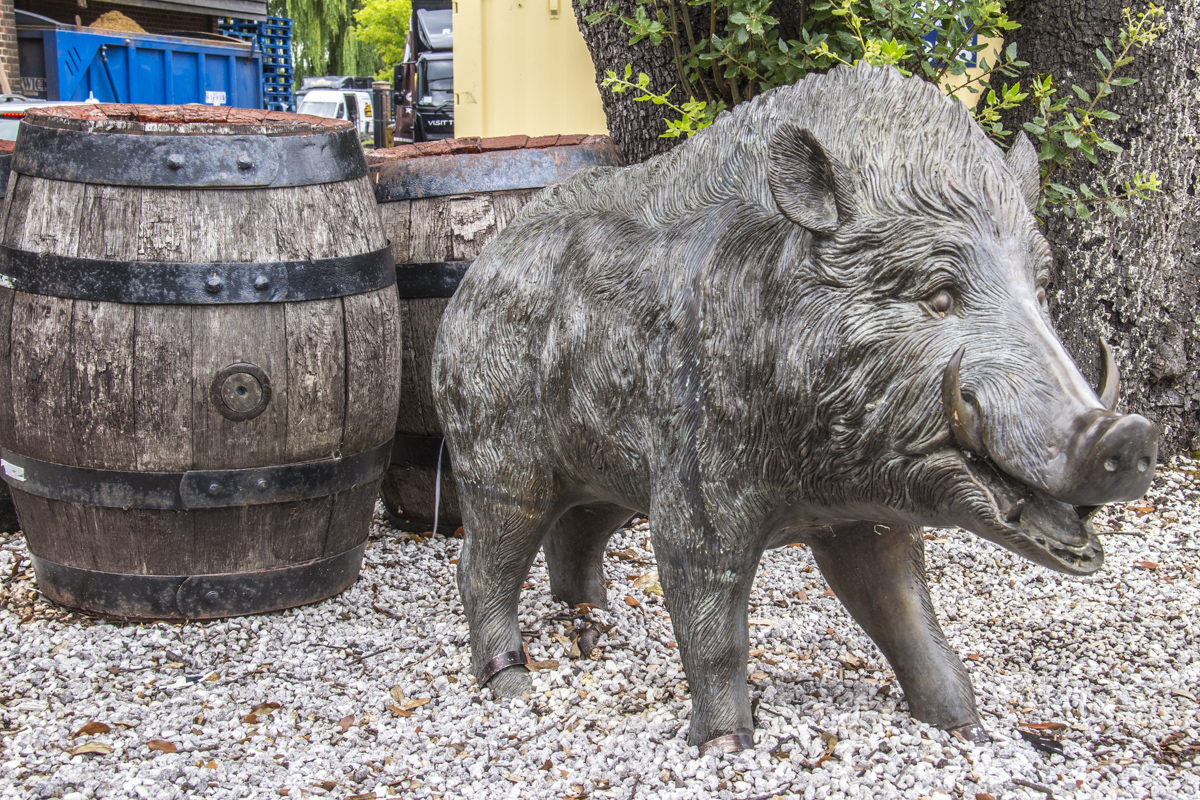
My tour started in the bar with a small glass of Razor Back while Victor briefly related the history of the Ringwood Brewery which was founded in 1977 by Peter Austin a passionate proponent of real ale. Razor Back was the first ale Austin brewed and it was originally called Ringwood Best. The name was changed when it was decided each ale should have a unique name. In July 2007 this very successful micro-brewery became part of Marston’s Brewery but continues to operate as an independent business brewing premium cask ale. As we walked around the brewery Victor explained, with clarity and humour, the different processes involved – mashing (mixing the basic ingredients), boiling, cooling, fermenting and casking. We finished in the bar where Victor invited everyone on the tour to try the other ales on tap – Boon Doggle, Forty-Niner and Old Thumper – all well-established favourites. I tried the Boon Doggle and then the Circadian, a bottled golden ale best drunk cold. I am not a beer drinker but I really liked this golden ale and chose that as my complimentary bottle to take home.
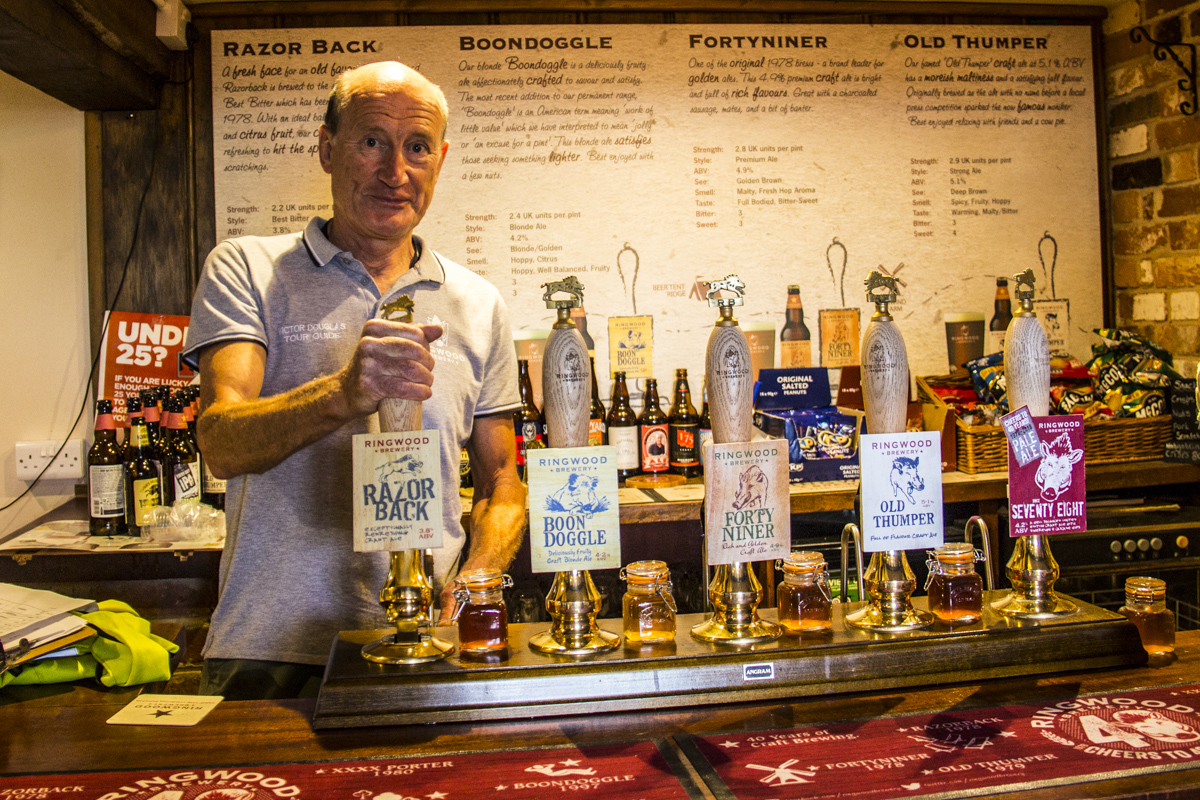
When I left Ringwood it was with the sense that this was a town in which its residents take great pride.
Available on GPSmyCity.com
This article is now featured on GPSmyCity. To download this article for offline reading or travel directions to the attractions highlighted in this article, go to Walking Tours in Ringwood on GPSmyCity
This article was based on the personal experience of Valery, an ExperiencedTraveller.